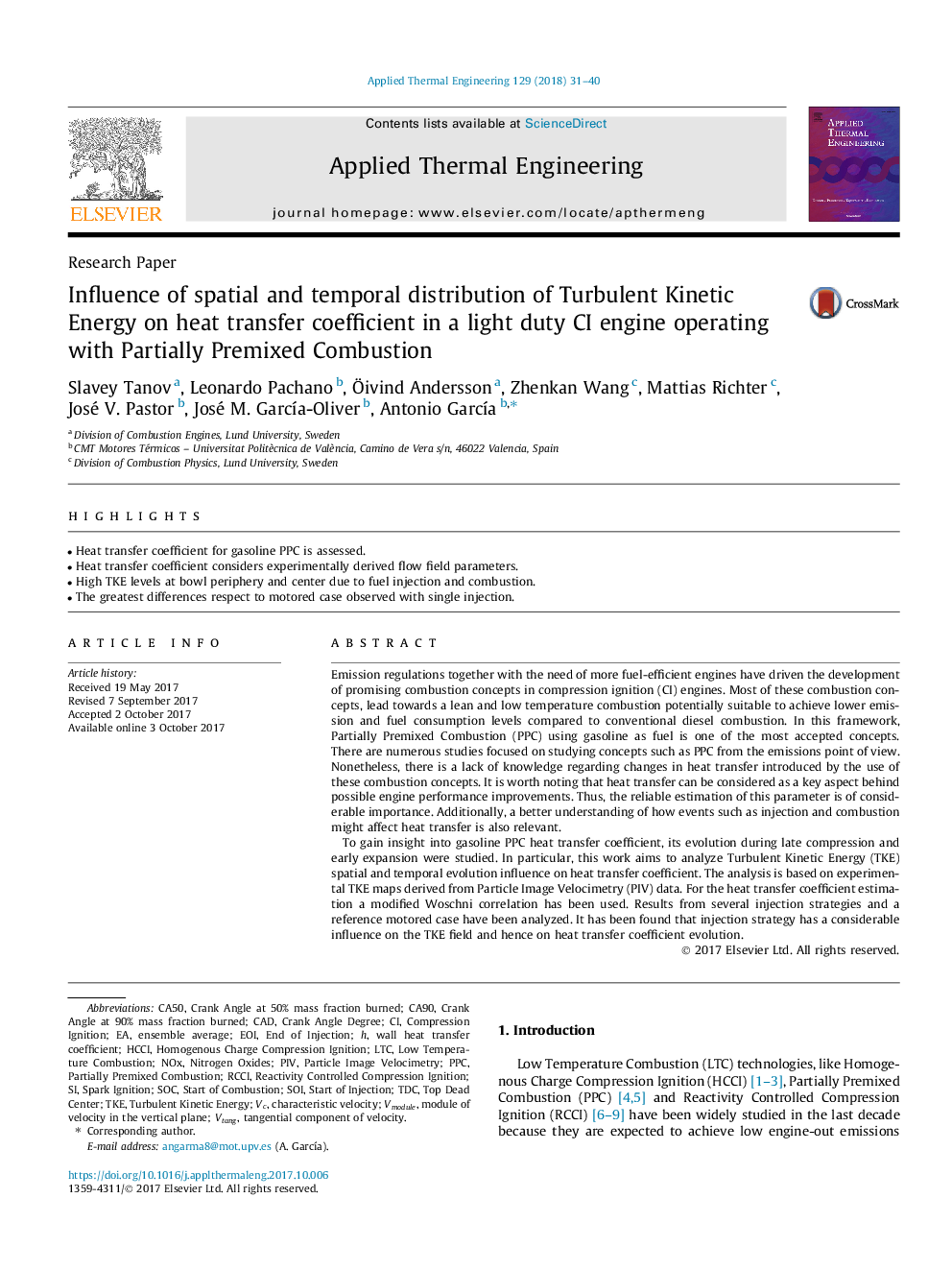| Article ID | Journal | Published Year | Pages | File Type |
|---|---|---|---|---|
| 4990318 | Applied Thermal Engineering | 2018 | 10 Pages |
Abstract
To gain insight into gasoline PPC heat transfer coefficient, its evolution during late compression and early expansion were studied. In particular, this work aims to analyze Turbulent Kinetic Energy (TKE) spatial and temporal evolution influence on heat transfer coefficient. The analysis is based on experimental TKE maps derived from Particle Image Velocimetry (PIV) data. For the heat transfer coefficient estimation a modified Woschni correlation has been used. Results from several injection strategies and a reference motored case have been analyzed. It has been found that injection strategy has a considerable influence on the TKE field and hence on heat transfer coefficient evolution.
Keywords
HCCIEOIPPCCA50TKERCCILTCSOITDCPIVCA90NOxReactivity controlled compression ignitionPartially premixed combustionLow temperature combustioncompression ignitionHomogenous charge compression ignitionTurbulent kinetic energyNitrogen oxidesspark ignitioncrank angle degreecrank angle at 50% mass fraction burnedParticle image velocimetrycharacteristic velocitySOCStart of combustionStart of injectionWall heat transfer coefficientCADEnsemble averagetop dead centerEnd Of Injection
Related Topics
Physical Sciences and Engineering
Chemical Engineering
Fluid Flow and Transfer Processes
Authors
Slavey Tanov, Leonardo Pachano, Ãivind Andersson, Zhenkan Wang, Mattias Richter, José V. Pastor, José M. GarcÃa-Oliver, Antonio GarcÃa,
